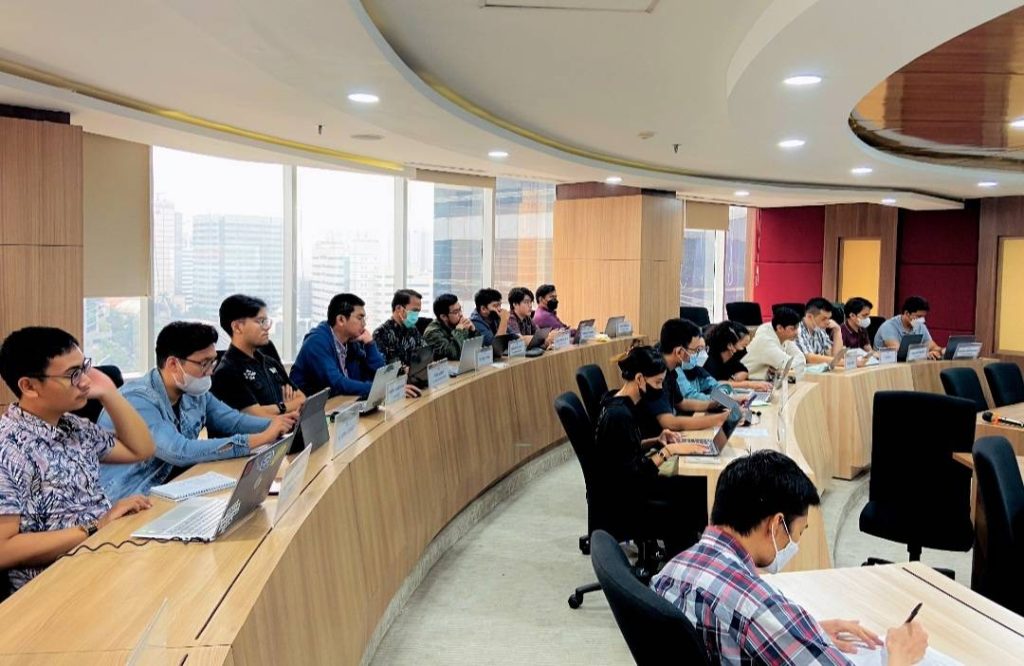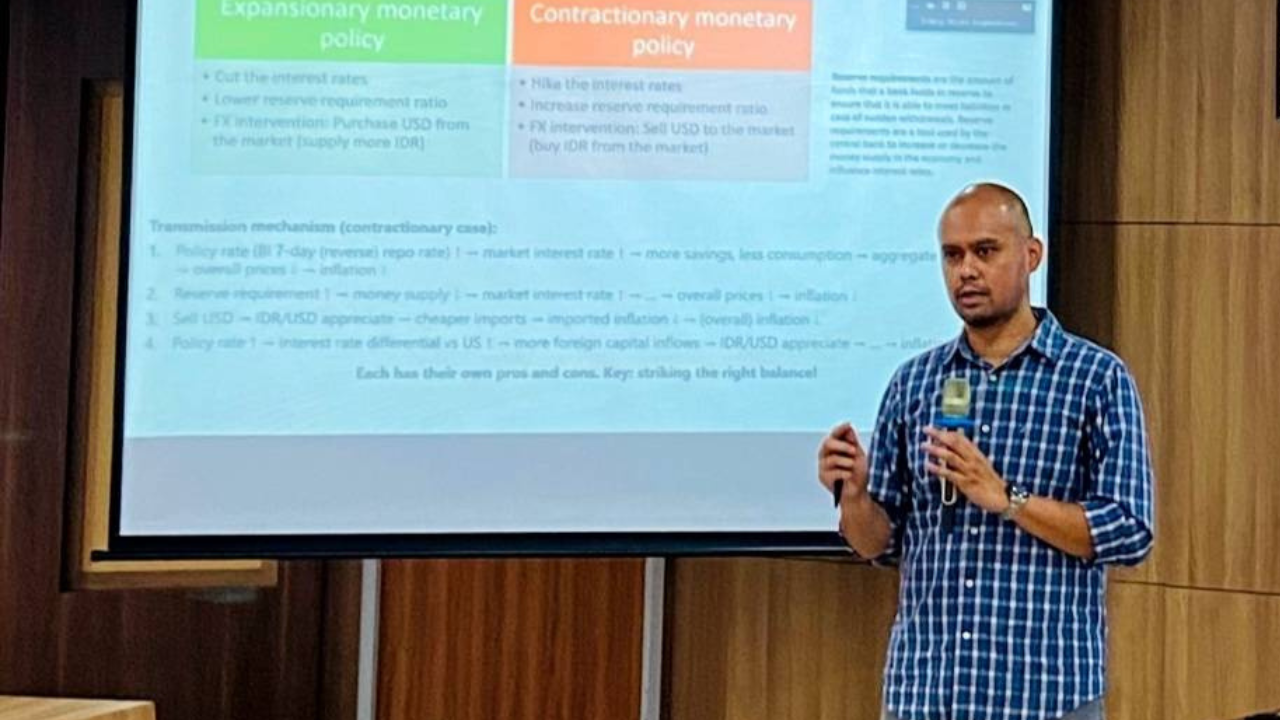In making economic policies, the state has two different types of policy tools, namely fiscal and monetary. But the general public is not much able to distinguish between the two.
Fiscal policy related to increased gross domestic product (GDP) growth. Fiscal policy is usually managed by the Ministry of Finance. The instruments used are tax collections, government spending, subsidies, or economic stimulus packages.
Meanwhile, monetary policy is a policy aimed at achieving price stability (inflation). Monetary policy is usually managed by the central bank. The instruments used are interest rates, money supply, or exchange rate policies.
Such was the presentation of the Assistant Director of Bank Indonesia Dony Ardiansyah in a guest lecture session in the Economic and Business Landscape Analysis course on Wednesday (29/3) at MBA ITB Jakarta, Graha Irama. The guest lecture session which was attended by around 50 General Management MBA students discussed Macroeconomics and Monetary Policy in Practice.
Furthermore, Dony explained that monetary policy has a direct impact on the money market. Meanwhile, fiscal policy has a direct impact on the goods market. The two markets are connected to each other. The two policies interact to achieve the expected equilibrium level of output and price.
“Monetary policy, fiscal policy, and other macro policies must all aim at social welfare, which includes GDP growth, reducing unemployment and poverty rates, or controlling inflation,” said Dony.
Explaining more deeply about monetary policy, Dony explained that a central bank can have several objectives in practice. What is usually used as an objective is GDP, currency values, or other things such as unemployment.
The application of these objectives is usually mandated by law. As in Indonesia, Bank Indonesia through Law no. 23 of 1999 mandates a single objective to achieve and maintain rupiah stability.
“Then, Law No. 4 of 2023 concerning the Development and Strengthening of the Financial Sector helps broaden BI’s objectives to help maintain financial system stability and economic growth,” added Dony.
Dony also explained the main monetary policy instruments used by BI. There are 2 main instruments, namely expansionary and contractionary monetary policies.
Expansionary monetary policy has more to do with lowering interest rates, lower reserve requirement ratios, and exchange rate intervention by buying US dollars from the market. Contractionary monetary policy raises interest rates, increases the reserve requirement ratio, and intervenes in the exchange rate by selling US dollars to the market.
Talking about challenges, Dony explained that there were 2 big challenges faced in monetary policy. In the challenge of climate change, the policy being prepared is the formation of a National Movement for Controlling Food Inflation which directly takes care of plantation matters.
Apart from that, there are challenges in Cryptocurrencies which are currently busy in society. To take care of this, there is already an official digital currency that is recognized by the world, called the central bank digital currency.





